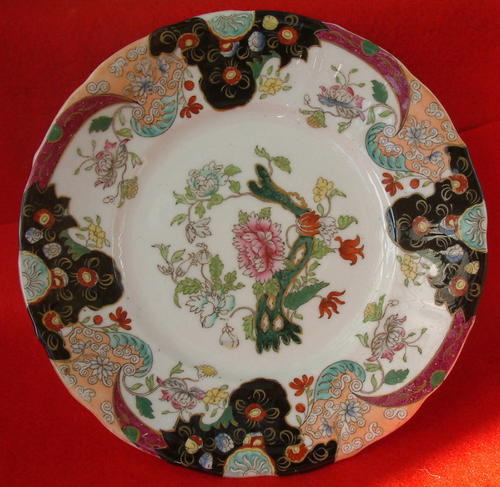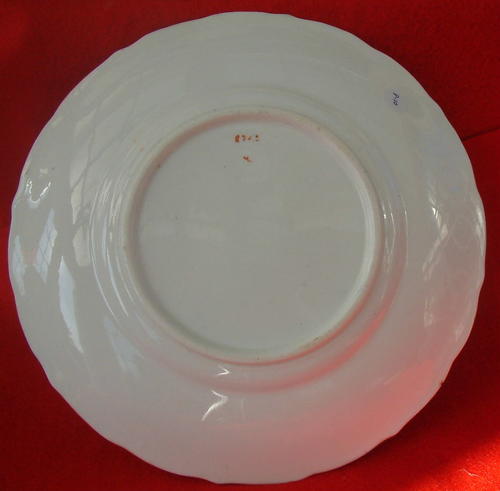Antique Victorian Chinoiserie Plate Circa 1830-1840 Ref. P.10
Secondhand
Shipping
Standard courier shipping from R30
R30 Standard shipping using one of our trusted couriers applies to most areas in South Africa. Some areas may attract a R30 surcharge. This will be calculated at checkout if applicable.
Check my rate
Check my rate
Ready to ship in
The seller has indicated that they will usually have this item
ready to ship within 3 business days. Shipping time depends on your delivery address. The most
accurate delivery time will be calculated at checkout, but in
general, the following shipping times apply:
Standard Delivery
| Main centres: | 1-3 business days |
| Regional areas: | 3-4 business days |
| Remote areas: | 3-5 business days |
Buyer Protection
How you're covered
Get it now, pay later
Product information
Condition:
Secondhand
Location:
South Africa
Time Period:
1800s
Type:
Plates & Bowls
Bob Shop ID:
612711017
Antique Victorian Chinoiserie Plate Circa 1830-1840 Ref. P.10

No maker's name, but this is typical as few pieces were marked in the early 1800s. However, it is possibly from Staffordshire, England.
The plate above shows an 'on-glaze' clobbered (or, filled in) transfer which appeared for a brief period in 1820s during the reign of George IV through to early Victorian times.
An 'on-glaze', or 'overglaze', decoration with enamel colours, fixed by a subsequent firing at about 750°C (1380°F), gave the painter greater possibilities. Soft-paste porcelains were usually covered in lead glazes which required a second firing, while the use of on-glaze enamel pigments demanded a third. This made them very expensive to produce.
The Plate has a Chinoiserie pattern, popular during the 1780 - 1800's, and would have been based on early Chinese designs. It shows a typical Chrysanthemum flower in the centre with foliage and other flowers as a border. . The hand-painting (or clobbering) was often done by children from the age of eight years and up, child labour being extensive at this time in Britain.



During the 1800's to the 1850's potteries were started by the hundreds, only to last a year or two and eventually collapsing or being taken over by a larger organisation. So, although we cannot accurately determine the maker, other clues from the plate tell us its possible age. Firstly it is not a porcelain, and, although the clay used was exceptionally good, small black 'spots' can be observed, revealing that the plate would have been coal-fired. The small particles of coal dust were the potter's worst nightmare - it was impossible to keep them out of the furnaces, and resulted is leaving very small spots. The plate above shows this fact, although they are not prolific. Now comes the glazing - In the late 1700's to very early 1800's glazing was still a bit of a 'hit and miss' technique. Early glazing was very thick and left 'ripple' marks. The plate above shows fairly good glazing but it is slightly thick and has numerous tiny bubbles which would suggest it is from the early to mid 1800's. The glazing also shows a typical orange-peel effect, often found in earlier ceramics. We also know this was a hand painted 'transfer' Chinoiserie design, popular in the early 1800s. The paints of that time would not take the heat of the initial firing and glazing which is why colour was added by hand afterwards and re-glazed at a lower temperature. By 1842, a diamond-shaped mark appeared on Victorian ceramics. This was to show that the design had been registered and this stopped a lot of piracy from other manufacturers. The plate does not have a registration number which again places it prior to 1842 The plate is in good overall condition with little wear, although there is one very small chip to the underside of the rim. This chip has been filled in. the colours remain crisp and clear. The number '8242'appears as handwritten on the reverse, possibly signifying the number of the painter.
The plate has a diameter of 22.4 cm and stands 3 cm high with a slightly scalloped rim.
Please note, I am NOT a qualified archaeologist/antiquarian and the description I have given is based on research of the subject.
This is a genuine antique. The classification of an 'antique' is that it should be 100 years old, OR MORE. There are many articles being offered as 'antiques' when, clearly, they are not.
Price: R500.00
Terms: We offer a strict three-day approval period from the date the parcel reaches you. Refunds/credits are based on the cost of the article, NOT including delivery charges. Please advise us within this period whether you would like to return any article for a refund/credit. Although we pride ourselves in our packing, the buyer remains responsible for loss, non-arrival or damage to goods being sent to, or returned.